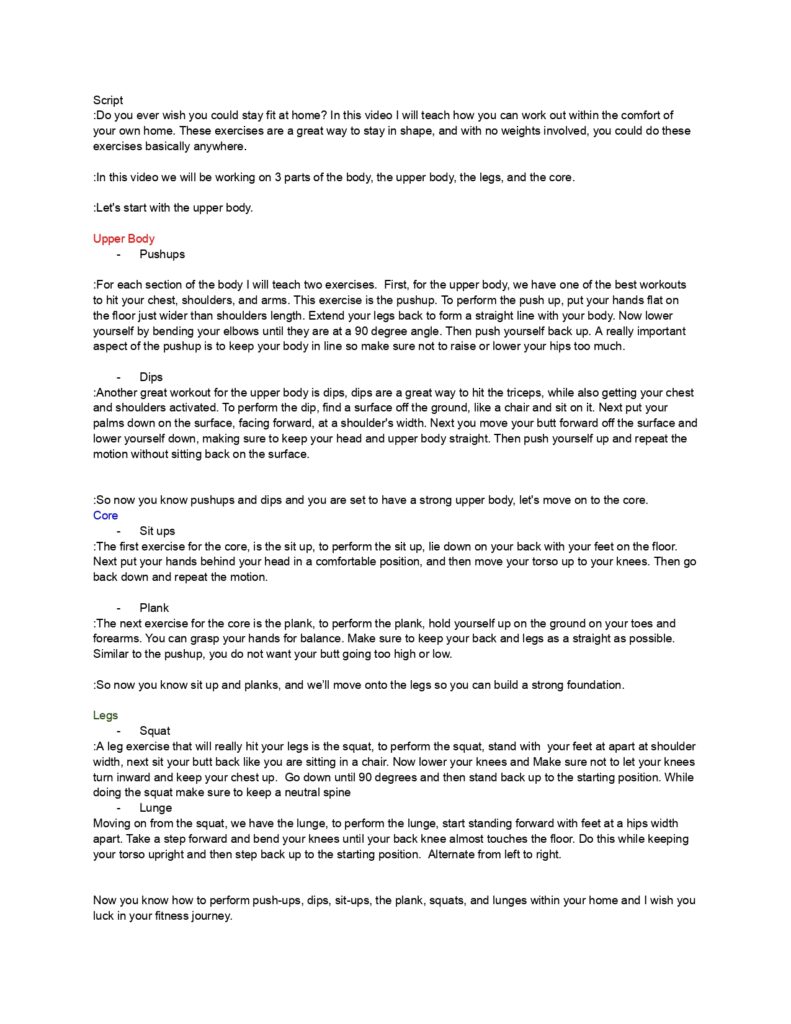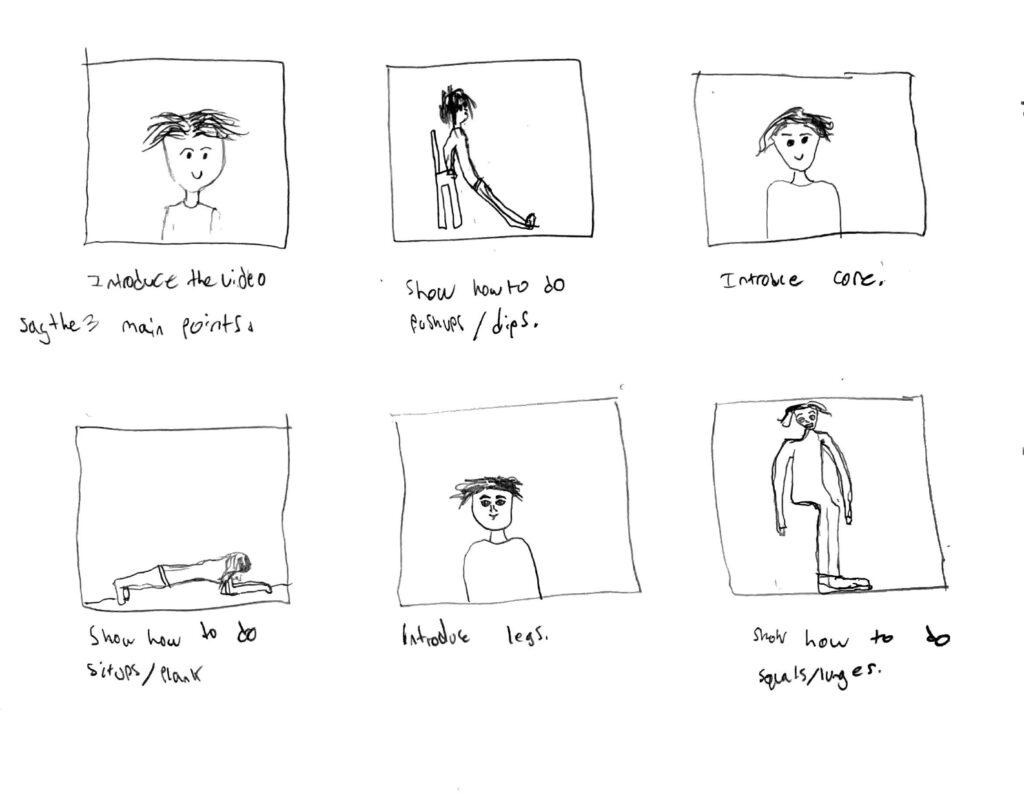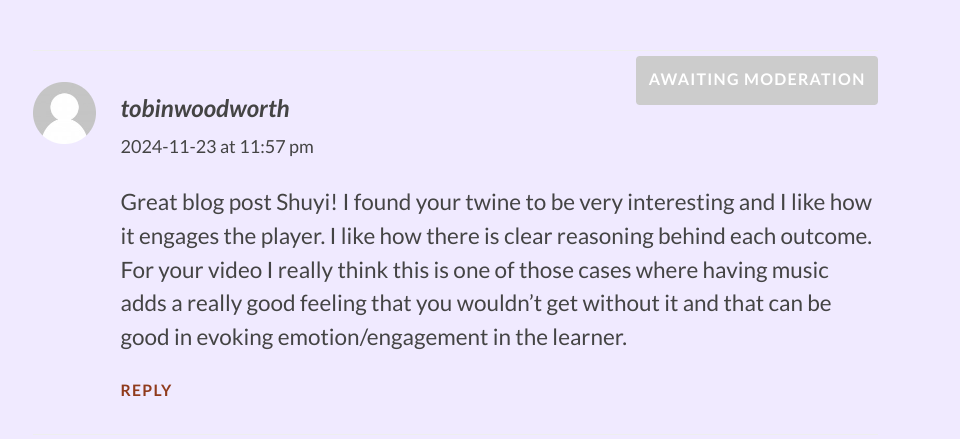Twine Exploration
Twine Reflection
A branched narrative like twine gives learners the ability to try different options and learn from their mistakes. In a trial and error type of learning, twine allows users to see what works and what doesn’t when reaching a solution. While not necessarily a “branched narrative”, I can apply the same logic to when I am doing coding in computer science. If I take one route and code a certain way that is wrong, my output from the computer will be “error” and I will have to go back and choose a different “path”. This type of learning can be applied to many subjects, like math when solving an equation, or mechanics when figuring out the best dimensions for a project.
Script

Video Reflection
My video was originally going to be how to do back squats at the gym using a bar but I realised that my background setting would cause too much extraneous load on the viewer. With other people lifting in the background and different machines everywhere, there is a lot for learners to get distracted by. After coming to this realisation I decided to switch to at home workouts where I can control the background setting and reduce extraneous load. In my video I also used signalling and segmenting by chunking the information into 3 colour coded sections for each different overall body section. Also I used the weeding technique and eliminated irrelevant information or visuals by controlling the setting and only focusing on relevant details. The easiest part of the process for me was actually filming the video and talking to the camera, I have made many videos in my life and these aspects I am very comfortable with. A part I struggled with was modality and temporal contiguity, in my video my audio matches what is happening in the video but it could be lined up better. For example, if I am saying “bend your knees” I shouldn’t already have bent my knees. The timing of each action I make should line up perfectly with my voiceover, which I think I could have done better and will do differently next time. Finally, in my video I used Merril’s first principle of instruction being problem-centered. To do this I used H5P to make the video interactive and have a question and true or false interaction pop up in the video for learners to interact with.
Simple Story Board

Story Telling Reflection
I remember learning all about Mesopotamia in my grade 7 class and specifically about Hammurabi’s laws. Even now, 9 years later, I can remember all the different stories my teacher told us about Hammurabi’s oddly specific laws. For example, she would tell stories about the laws and what would happen if they were broken. For example if anyone brings accusation against another person, and that accused person sinks in the river, then the accuser gets possession of the accused’s house. The stories were impactful because the concepts were so different and new from the laws we have now. My teacher getting in depth and giving examples grew my interest in Hammurabi’s law and in result it made me more interested in everything we were learning at the time. These stories she told used the techniques of immersing the audience, creating suspense, and bringing characters to life.
Comment on Shuyi’s blog post!

Recent Comments